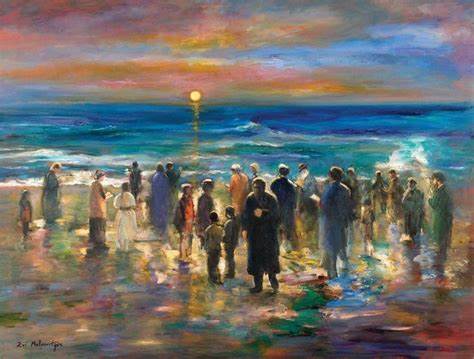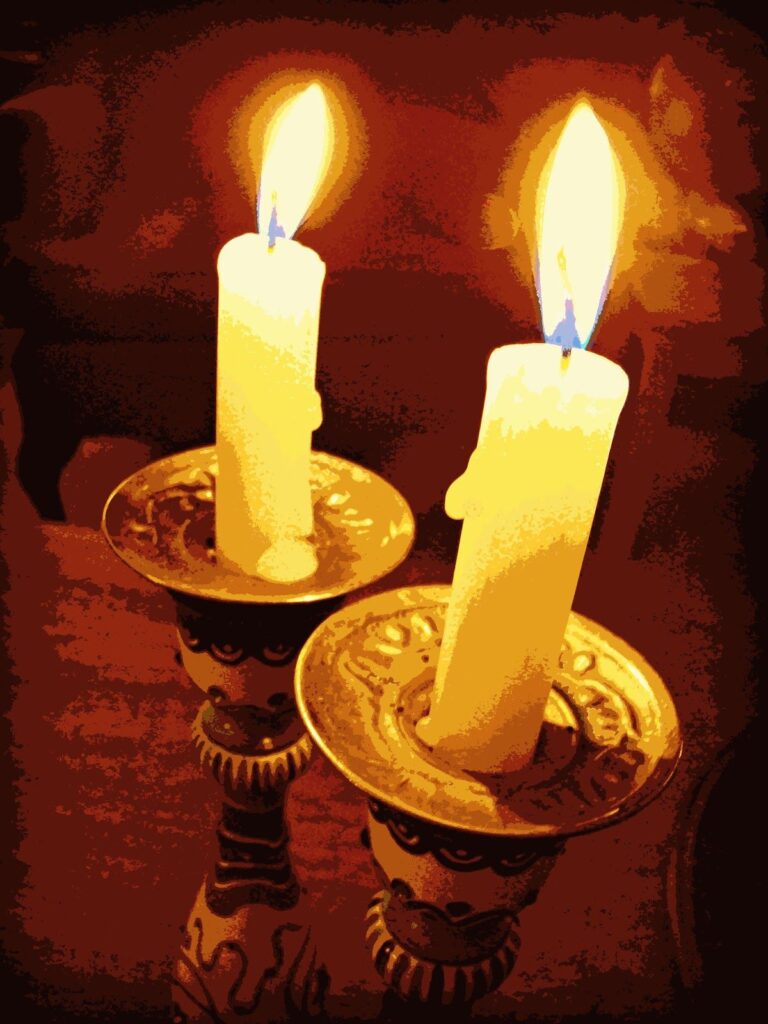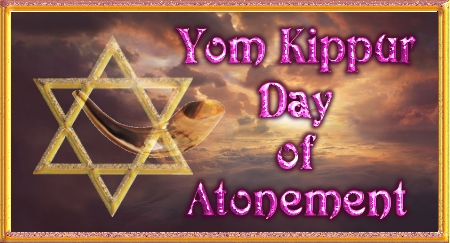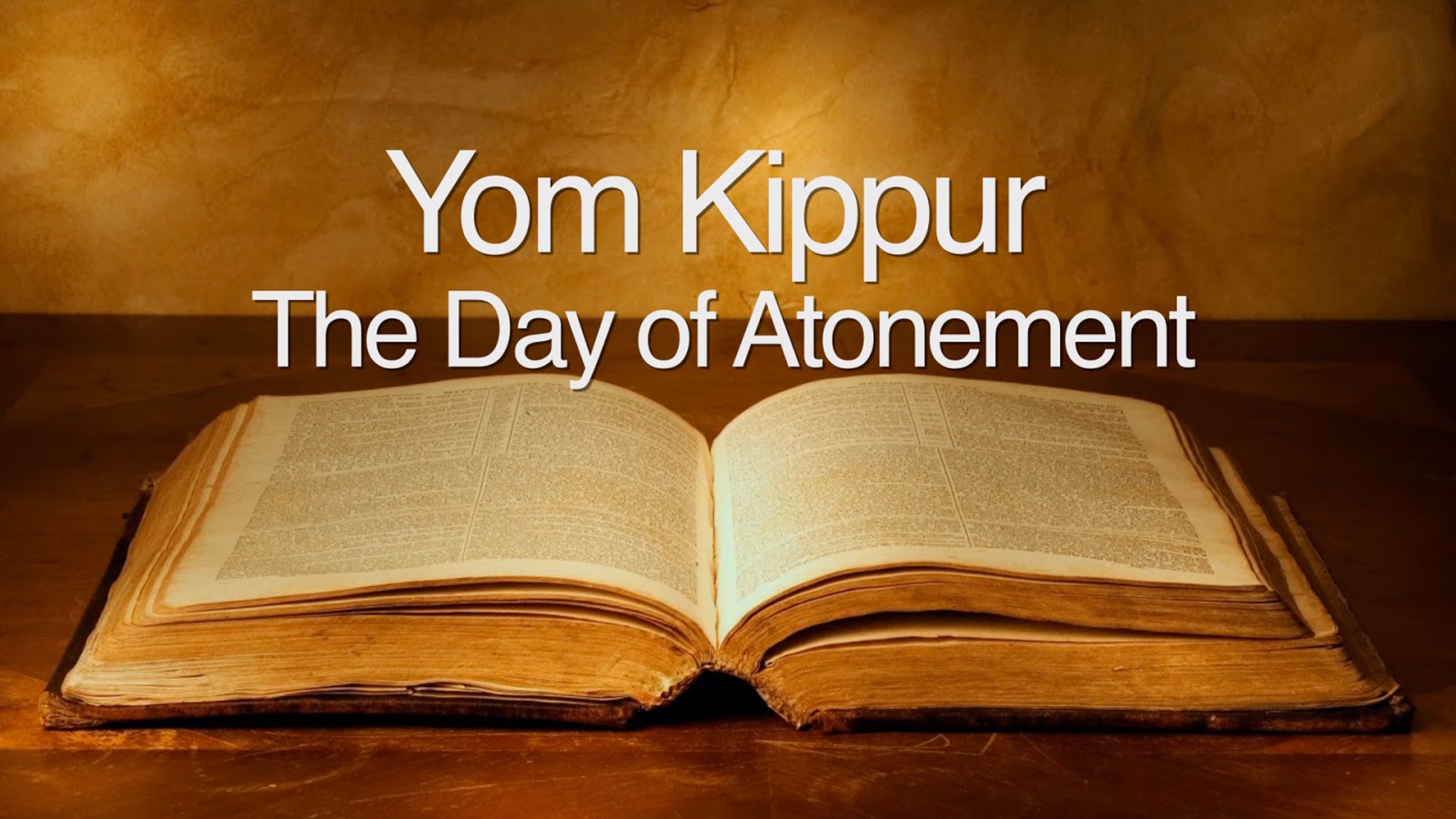This year Yom Kippur Begins September 24, Sunday night 6.36 pm (Philadelphia time) – ends Monday, September 25 AFTER nightfall 7:35 (Philadelphia Time)
For more information visit: Yom Kippur 2023 FAQ – Chabad.org
(This Document contains G-d’s Name, therefore it may NOT be thrown out)

Before Yom Kippur
1. TASHLICH
In a tradition dating back to the Middle Ages, Jews congregate around a natural body of water – preferably one containing live fish and recite the Tashlich prayer, which symbolizes our hope that G-d will “cast our sins into the depths of the sea.” While standing at the river’s or creek’s edge, the custom is to shake out our pockets three times to symbolize our desire to dispose of our sins and be free of them.
“Who is a God like You, Who pardons iniquity, and overlooks the transgression of the remnant of His heritage? He retains not His anger forever, because He delights in mercy. He will again have mercy upon us; He will subdue our iniquities; and You will cast all their sins into the depths of the sea.”
2. KAPAROT
Kaparot is a custom in which the sins of a person are symbolically transferred to money (later to be given as charity) or a chicken (later to be slaughtered and donated to charity) . The money bill (or a chicken) is held above the person’s head and swung in a circle three times, while the following is spoken:
“This is my exchange, my substitute, my atonement; this amount __10$, 20$ or (chicken shall go to its death) but I shall go to a good, long life, and to peace.”
The hope is that the money or the fowl, which is then donated to the poor for food, will take on any misfortune that might otherwise occur to the one who has taken part in the ritual, in punishment for his or her sins.
Eating a Pre-Yom Kippur Holiday Meal
It is a mitzvah to eat and drink in abundance, more than one is normally accustomed to, before the onset of Yom Kippur. The Talmud states that “Whoever eats and drinks on the 9th of Tishrei (a day before), it is regarded as if he had fasted on both the 9th and the 10th.” Before your pre-Yom Kippur meal wash your hands on bread.
Fill a large cup with water. Pass the cup to your left hand and pour three times over your right hand. Repeat by pouring on your left hand. As you wipe your hands recite the blessing:
Baruch atah Melech Ha’Olam, asher kidshanu bemitzvotav vetzivanu al netilat yadayim.
[Blessed are You, L-rd our G‑d, King of the universe, who sanctified with His Mitzvahs and commanded us on washing our hands]
When everyone has returned to the table, we raise the two challah loaves and recite the blessing:
Ba-ruch atah A-do-nay, E-lo-hei-nu Melech Ha-Olam, hamotzie le-chem min ha-are-tz.
[Blessed are You, L-rd, our G‑d, King of the universe, who brings forth bread from the earth.]
Cut the Challah, dip it in honey, and have a bite. Pass around pieces and make sure everyone does the same.

Lighting of the Candles
For exact times in your area go to:
http://www.chabad.org/calendar/candlelighting_cdo/aid/6226/jewish/Shabbat-Candle-Lighting-Times.htm
Women (or if there isn’t a woman in the house, the head of the household), light candles.
Light the candles on the evening of September 24, Sunday night 6:36 pm Philadelphia time
1) Ba-ruch A-tah nu me-lech ha-olam asher ki-deshanu be-mitzvo-tav ve-tzvi-vanu le-hadlik ner shel HaYom Kippirim.
[Blessed are You, L-rd our G-d, King of the universe, who has sanctified us with His commandments and has commanded us to kindle the lights of Yom Kippur.]
2) Ba-ruch A-tah me-lech ha-olam she-heche-ya-nu ve-ki-yi-ma-nu ve-higi-a-nu liz-man ha-zeh.
[Blessed are You, L-ord our G-d, King of the universe, who has granted us life, sustained us, and enabled us to reach this occasion.]
May each of us be sealed in the Book of Life for a good year!
Yom Kippur falls ten days after Rosh Hashanah on the 10th of Tishrei. The purpose of Yom Kippur is to bring about reconciliation between people and between individuals and God. According to Jewish tradition, it is also the day when God decides the fate of each human being. Although Yom Kippur is an intense holiday it is nevertheless viewed as a happy day. Why? Because if one has observed the holiday properly by the end of Yom Kippur they will have made peace.
There are five areas of pleasure that we avoid on Yom Kippur:
1. Eating or drinking.
2. Wearing leather footwear.
3. Bathing or washing.
4. Applying ointment, lotions, or creams.
5. Engaging in any form of spousal intimacy.
The prohibition against wearing leather comes from a reluctance to wear the skin of a slaughtered animal while asking God for mercy.
The Yom Kippur Fast Ends on Monday Sept. 25, 2023 at 7;35 (Philadelphia Time)

There are three essential components of Yom Kippur:
1. Repentance
2. Prayer
3. Fasting
1. Repentance (Teshuvah)
Yom Kippur is a Day of Reconciliation, when Jews strive to make amends with people and to draw closer to God through prayer and fasting. The ten days leading up to Yom Kippur are known as the Ten Days of Repentance. During this period Jews are encouraged to seek out anyone they may have offended and to sincerely request forgiveness so that the New Year can begin with a clean slate. If the first request for forgiveness is rebuffed, one should ask for forgiveness at least two more times, at which point the person whose forgiveness is being sought should grant the request.
This process of repentance is called TESHUVAH and it is a crucial part of Yom Kippur. Although many people think that transgressions from the previous year are forgiven through prayer, fasting and participation in Yom Kippur services, Jewish tradition teaches that only offenses committed against God can be forgiven on Yom Kippur. Hence it is important that people make an effort to reconcile with others before participating in Yom Kippur services.
2. Prayer
The day is spent in the synagogue, where we hold five prayer services:
- Maariv, with its solemn Kol Nidrei service, on the eve of Yom Kippur;
- Shacharit, the morning prayer, which includes a reading from Leviticus followed by the Yizkor memorial service;
- Musaf, which includes a detailed account of the Yom Kippur Temple service;
- Minchah, which includes the reading of the Book of Jonah;
- Neilah, the “closing of the gates” service at sunset, followed by the shofar blast marking the end of the fast.
Yom Kippur is the longest synagogue service in the Jewish year. It begins on the evening before Yom Kippur day with a haunting song called KOL NIDREI (All Vows). The words of this melody ask God to forgive any vows people have made to God and not kept.
The service on the day of Yom Kippur lasts from morning until nightfall. Many prayers are said but one is repeated at intervals throughout the service. This prayer is called Al Khet and asks for forgiveness for a variety of sins that may have been committed during the year. The Jewish concept of sin is not like the Christian concept of original sin. Rather, it’s the kind of everyday offenses like hurting those we love, lying to ourselves or using foul language that Judaism views as sinful. You can clearly see examples of these infractions in the Yom Kippur liturgy, for instance in this excerpt from Al Khet:
For the sin that we have committed under stress or through choice;
For the sin that we have committed in stubbornness or in error;
For the sin that we have committed in the evil meditations of the heart;
For the sin that we have committed by word of mouth;
For the sin that we have committed through abuse of power;
For the sin that we have committed by exploitation of neighbors;
For all these sins, O God of forgiveness, bear with us, pardon us, forgive us!
When Al Khet is recited people gently beat their fists against their chests as each sin is mentioned. Sins are mentioned in plural form because even if someone hasn’t committed a particular sin, Jewish tradition teaches that every Jew bears a measure of responsibility for the actions of other Jews.
During the afternoon portion of the Yom Kippur service the Book of Jonah is read to remind people of God’s willingness to forgive those who are sincerely sorry.
The last part of the service is called Ne’ilah (Shutting). The name comes from the imagery of Ne’ilah prayers, which talk about gates being shut against us. People pray intensely during this time, hoping to be admitted to God’s presence before the gates have been shut.
3. Fasting
Girls who are 12 years or older and boys who are 13 years or older are required to participate in the full 25-hour fast along with adults. However, pregnant women, women who have recently given birth and anyone suffering from a life-threatening illness have to ask for advice from a Rabbi on how to observe the Fast. Judaism values life above the observance of Jewish law.
Please watch this video before the Holiday
My Russian Video is available at: https://www.youtube.com/watch?v=o8sTlzCqz0s

May you be blessed to end the fast with a feeling of deep serenity, which comes from having made peace with people in your life and with the Almighty!

